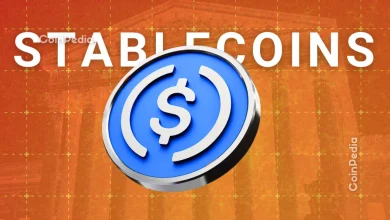
Experts say Bitcoin’s classic 4-year halving cycle is losing influence as macro trends take over
Treasury holdings, ETF, and Wall Street investment are key drivers of price movements
Some analysts argue that the cycle still exists as price patterns show signs of repeating
There is a growing debate around whether the classic 4-year Bitcoin halving cycle is still relevant or if it has become obsolete.
For years, people have believed that after each halving, the price follows a predictable pattern. But with global economic trends playing a bigger role, many say Bitcoin is reacting to the wider market, and the old pattern is losing its power.
Let’s find out what the experts have to say.
The 4-Year Halving Cycle Might Be Over
Bitcoin expert Pierre Rochard is the latest one to weigh in. He says that it’s “more likely than not” that the classic 4-year halving cycles are over. He points out that halvings don’t really affect the trading supply anymore since 95% of Bitcoin is already mined.
Most coins entering the market today come from early holders selling, while demand is driven by retail investors, wealth platforms offering Bitcoin ETFs, and companies adding BTC to their balance sheets.
Crypto author Jason Williams also points out that the top 100 Bitcoin treasury companies now hold nearly 1 million BTC. “This is why the Bitcoin 4-year cycle is over,” he said.
Institutional Forces and Macro Trends Are Now in Control
Just recently, Bitwise CIO Matt Hougan explained why the old halving pattern is fading.
He explains that the halving’s influence on the market is getting weaker. At the same time, lower interest rates now work in crypto’s favor, regulatory clarity is improving, and institutional adoption is accelerating. Together, these factors are reducing the chances of extreme boom-and-bust swings.
Hougan expects these long-term forces to define Bitcoin’s future. He sees 2026 not as a frantic super-cycle, but as a period of steady, sustained growth.
“I think it’s more ‘sustained steady boom’ than super-cycle,” he said.
Not everyone agrees…
But there are always opposing views. Crypto analyst CRYPTO₿IRB argues that the rise of ETFs actually strengthens the cycle by aligning crypto with the traditional finance world, which also works in multi-year patterns.
What Bitcoin Price Trends Reveal
Crypto expert and YouTuber Benjamin Cowen notes that Bitcoin is on track to close August with gains, following a familiar post-halving pattern.
He points out that historically, Bitcoin tends to rise in July and August, dip in September, then climb again toward the market peak in Q4, before heading into a bear market. If this plays out again, it could mean that while the mechanics of the cycle are changing, its seasonal tendencies remain.
Takeaway for Investors
It seems like the old halving cycle is no longer the sole driver of Bitcoin’s market moves, but it has not completely disappeared either. Supply shocks are less significant, and macroeconomic conditions and institutional demand play a bigger role now.
For long-term investors, the focus should be on key fundamentals such as ETF inflows, regulation, and broader economic trends.
Never Miss a Beat in the Crypto World!
Stay ahead with breaking news, expert analysis, and real-time updates on the latest trends in Bitcoin, altcoins, DeFi, NFTs, and more.
FAQs
Following historical trends: July/August gains, potential September dip, then Q4 rally – suggesting seasonal patterns remain despite structural changes.
ETF inflows ($403M daily avg), regulatory clarity, and macro conditions (rate cuts) outweigh halving mechanics for long-term BTC valuation.
Yes – With institutional adoption (ETFs averaging $403M daily inflows), corporate treasuries holding 1M BTC, and macro tailwinds like potential rate cuts, BTC remains a strong long-term asset.
Trust with CoinPedia:
CoinPedia has been delivering accurate and timely cryptocurrency and blockchain updates since 2017. All content is created by our expert panel of analysts and journalists, following strict Editorial Guidelines based on E-E-A-T (Experience, Expertise, Authoritativeness, Trustworthiness). Every article is fact-checked against reputable sources to ensure accuracy, transparency, and reliability. Our review policy guarantees unbiased evaluations when recommending exchanges, platforms, or tools. We strive to provide timely updates about everything crypto & blockchain, right from startups to industry majors.
Investment Disclaimer:
All opinions and insights shared represent the author's own views on current market conditions. Please do your own research before making investment decisions. Neither the writer nor the publication assumes responsibility for your financial choices.
Sponsored and Advertisements:
Sponsored content and affiliate links may appear on our site. Advertisements are marked clearly, and our editorial content remains entirely independent from our ad partners.







